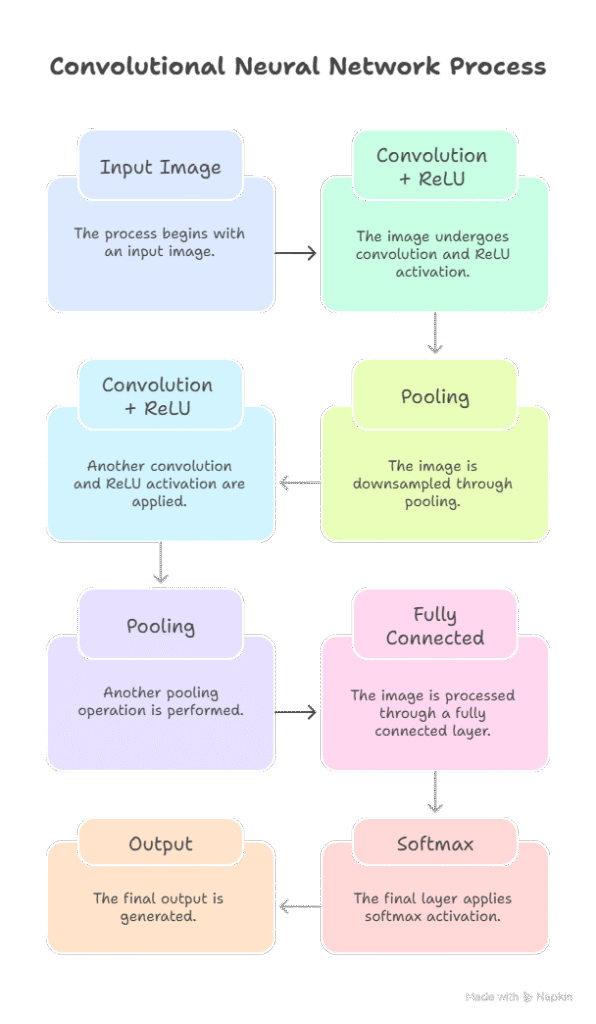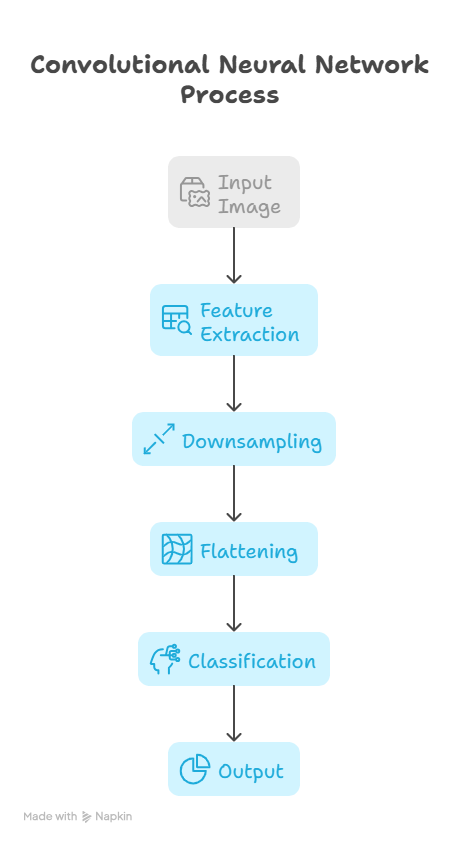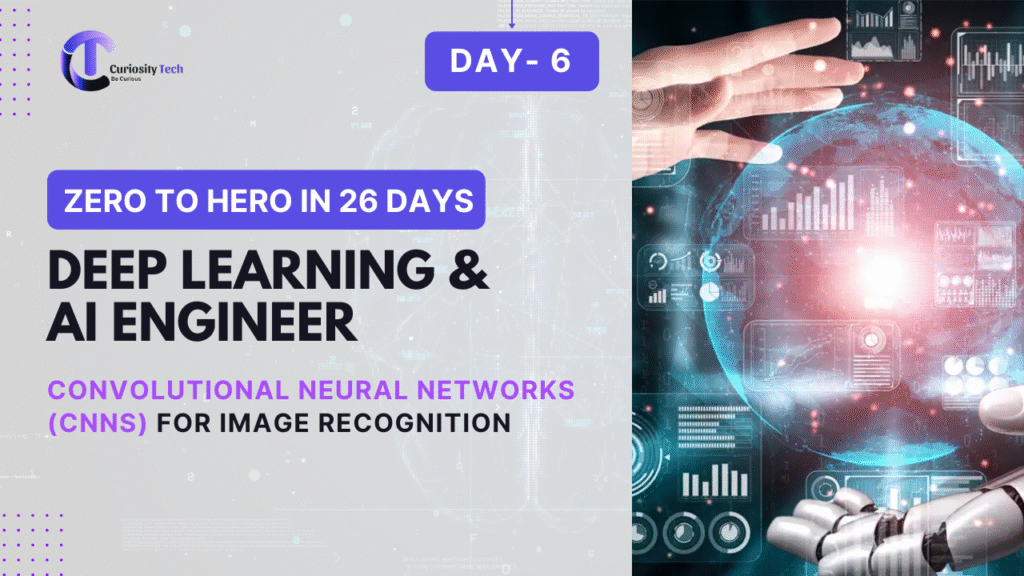Introduction
If neural networks are the foundation of deep learning, then Convolutional Neural Networks (CNNs) are the powerhouse for image and video processing. From detecting faces on social media to powering self-driving cars, CNNs are everywhere.
At CuriosityTech.in, students in Nagpur start exploring CNNs by building practical projects like cat vs dog classifiers, handwritten digit recognition, and medical image detection. The combination of hands-on coding, guided mentorship, and project-oriented learning ensures that beginners quickly understand why CNNs dominate computer vision.
1. What is a CNN?
A Convolutional Neural Network is a specialized neural network designed to process grid-like data, such as images. Unlike fully connected networks, CNNs automatically detect important features like edges, textures, and patterns.
Analogy: Imagine scanning a photograph piece by piece to detect shapes. CNNs do exactly that, but with mathematical filters.
Core Components:
- Convolution Layer: Applies filters to detect features.
- Pooling Layer: Reduces dimensionality, keeping important information.
- Fully Connected Layer: Combines features for classification.
- Activation Functions: Introduces non-linearity (ReLU commonly used).
2. CNN Architecture (Simplified)

Layer Explanation:
| Layer | Function | Purpose |
| Convolution | Filter application | Extract features like edges or textures |
| Activation (ReLU) | Introduce non-linearity | Helps model complex patterns |
| Pooling (Max/Average) | Downsampling | Reduce computational cost and retain key features |
| Fully Connected | Classification | Combine features for final prediction |
| Softmax | Probability output | Determine class probabilities |
3. How CNNs Work (Step-by-Step)

4. Practical Example
At CuriosityTech, beginners often work on the MNIST dataset (handwritten digits):
TensorFlow Example:
import tensorflow as tf
from tensorflow.keras import layers, models
model = models.Sequential([
layers.Conv2D(32, (3,3), activation=’relu’, input_shape=(28,28,1)),
layers.MaxPooling2D((2,2)),
layers.Conv2D(64, (3,3), activation=’relu’),
layers.MaxPooling2D((2,2)),
layers.Flatten(),
layers.Dense(64, activation=’relu’),
layers.Dense(10, activation=’softmax’)
])
model.compile(optimizer=’adam’, loss=’sparse_categorical_crossentropy’, metrics=[‘accuracy’])
Observation: Even beginners see accuracy improvements after tuning layers, filters, and learning rates — a confidence-building experience.
5. Key Advantages of CNNs
| Advantage | Explanation |
| Parameter Sharing | Same filter applied across image → fewer parameters |
| Spatial Hierarchy | Detect features from simple (edges) to complex (faces) |
| Translation Invariance | Recognizes objects regardless of location |
| High Accuracy | State-of-the-art for image classification, object detection, and segmentation |
6. Real-World Applications
- Social Media: Face detection in Facebook, Instagram filters.
- Healthcare: Tumor detection from MRI and X-ray images.
- Autonomous Vehicles: Road sign detection and obstacle recognition.
- Security: Surveillance and biometric identification.
CuriosityTechcuriositytech.inExample: Students built a COVID-19 X-ray classification model as part of a mentorship project, learning both CNN architecture and practical deployment.
7. Tips for Beginners
- Start with small datasets to understand filter behavior.
- Visualize feature maps to see what CNN is learning.
- Use pre-trained models (VGG16, ResNet) for transfer learning.
- Experiment with pooling types, kernel sizes, and activation functions.
8. Career Perspective
- Deep Learning Engineers specializing in computer vision often require CNN expertise.
- Employers look for hands-on project experience: image classification, object detection, and segmentation.
- Mentorship at CuriosityTech.in helps learners prepare a portfolio that stands out in interviews.
9. Human Story
A student in curiositytech.in Nagpur tried to classify animals using a CNN. Initially, the model misclassified cats as dogs. After guidance, the student:
- Increased convolutional layers.
- Used data augmentation.
- Applied softmax activation at the output.
Result: Accuracy jumped from 65% to 92%, demonstrating the power of CNNs and guided learning.
Conclusion
CNNs are the cornerstone of image recognition and computer vision. Mastering them equips learners to tackle real-world challenges in AI, from medical imaging to autonomous vehicles. Combining theoretical understanding with hands-on projects at CuriosityTech.in ensures beginners transition into confident, job-ready Deep Learning Engineers.

